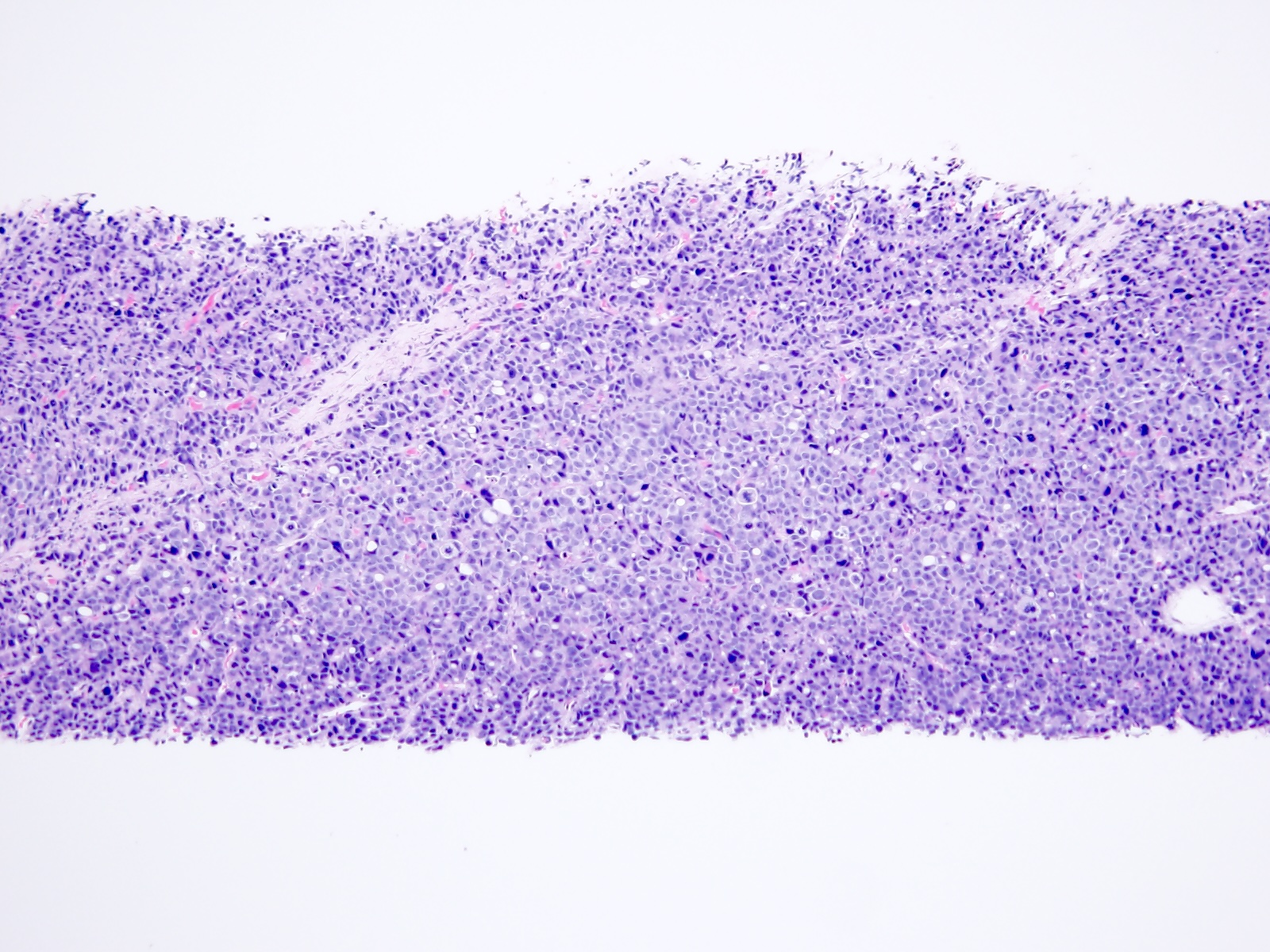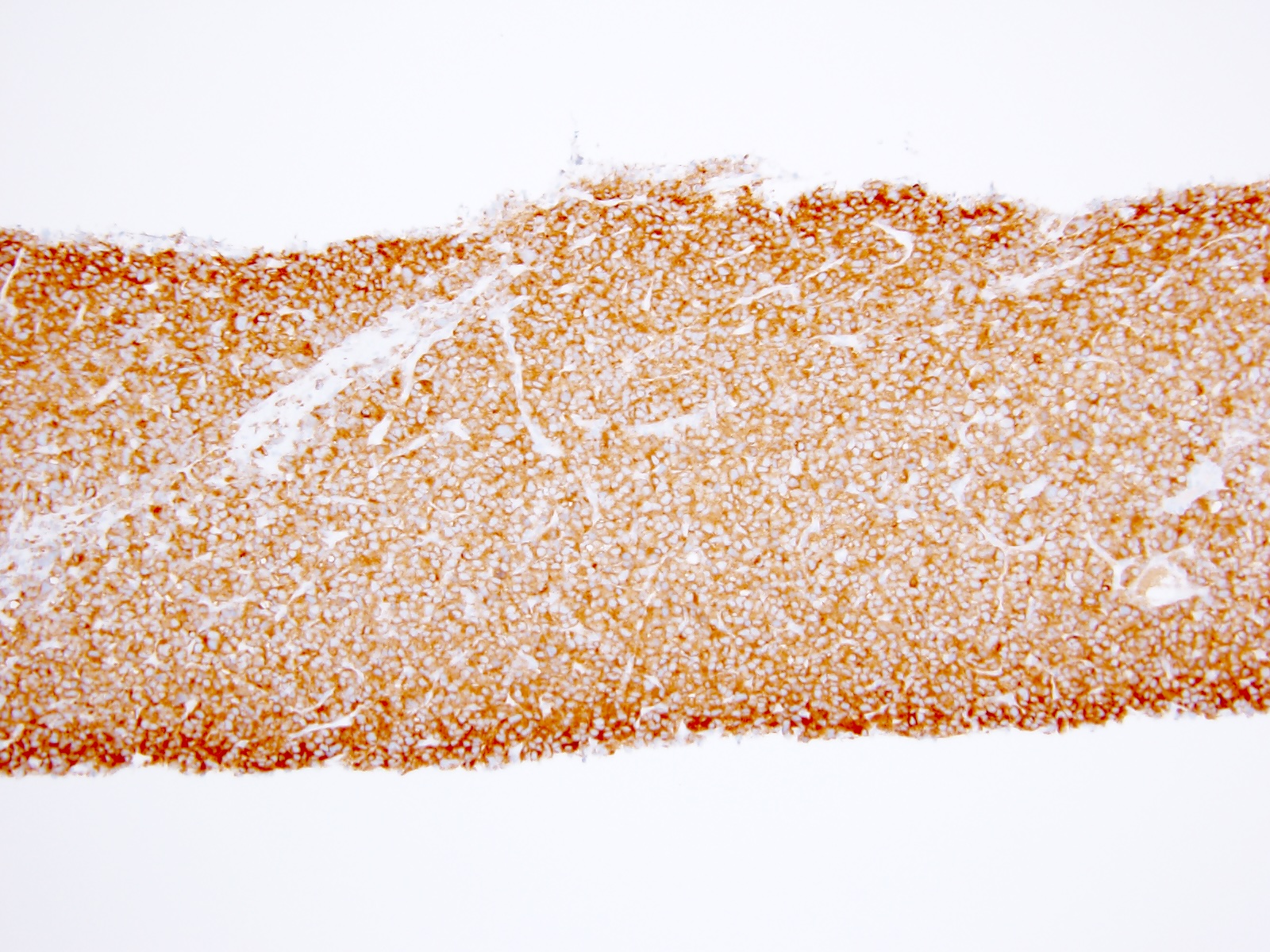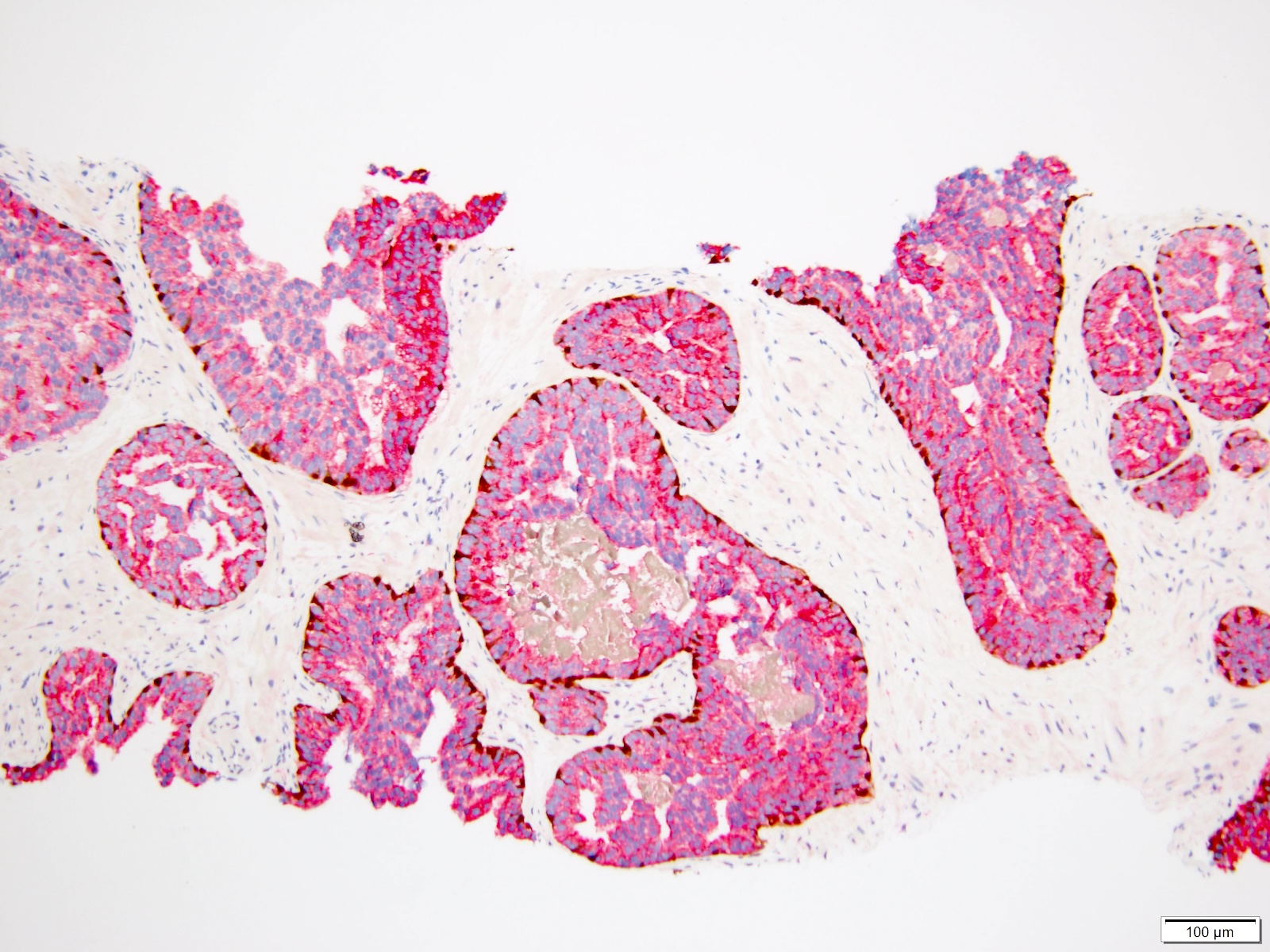Table of Contents
Definition / general | Major updates | WHO (2022) | Microscopic (histologic) images | Additional references | Board review style question #1 | Board review style answer #1 | Board review style question #2 | Board review style answer #2Cite this page: Pires Gama A, Choy B. WHO classification. PathologyOutlines.com website. https://www.pathologyoutlines.com/topic/prostateWHO.html. Accessed April 2nd, 2025.
Definition / general
- The World Health Organization (WHO) 2022 Classification of Urinary and Male Genital Tumors (5th edition) replaces the previous WHO 2016 Classification
Major updates
- Low grade prostatic intraepithelial neoplasia is no longer recognized as a reportable entity as it is not possible to distinguish from benign glandular hyperplasia
- Cribriform subtype of high grade prostatic intraepithelial neoplasia (HGPIN) is no longer regarded as a distinct entity
- The term atypical intraductal proliferation is preferred to denote intraductal proliferations that are more complex than HGPIN but less complex than intraductal carcinoma; however, consensus on the terminology has not been reached (Pathology 2018;50:60, Arch Pathol Lab Med 2021;145:461)
- Intraductal carcinoma of the prostate (IDC-P) may represent 2 distinct entities
- Small subset of IDC-P lesions is thought to have progressed from HGPIN precursor and are truly in situ
- Majority of IDC-P lesions represent late events associated with high grade invasive carcinoma colonizing nonneoplastic prostatic ducts and acini
- Whether to include (or exclude) IDC-P in Gleason grading remains controversial with diverging recommendations by leading societies (Am J Surg Pathol 2020;44:e87, Arch Pathol Lab Med 2021;145:461)
- Prostatic intraepithelial neoplasia-like adenocarcinoma has been moved and is discussed as a subtype of acinar adenocarcinoma (Am J Surg Pathol 2018;42:1693, Histopathology 2021;78:327)
- Ductal adenocarcinoma remains separate from acinar adenocarcinoma, although there is consideration to reclassify it as a subtype of acinar adenocarcinoma (Mod Pathol 2009;22:359, Prostate 2015;75:1610, Prostate 2017;77:1242, Eur Urol Focus 2019;5:433, JCO Precis Oncol 2019;3:PO.18.00327)
- Adenoid cystic (basal cell) carcinoma of the prostate is the preferred diagnostic terminology, rather than basal cell carcinoma, to avoid confusion with the more common skin tumor
- The designation of subtypes has replaced variants for distinct clinical or morphologic categories within a tumor type; the term variant is used for genomic alterations
- Examples of subtypes of prostatic acinar adenocarcinoma include
- Prostatic intraepithelial neoplasia-like adenocarcinoma
- Signet ring-like cell acinar adenocarcinoma
- Sarcomatoid acinar adenocarcinoma
- Pleomorphic giant cell acinar adenocarcinoma
- Examples of subtypes of prostatic acinar adenocarcinoma include
- Neuroendocrine, mesenchymal, hematolymphoid, melanocytic, metastatic and genetic syndrome related tumors are now discussed in separate chapters
- Exceptions include
- Mesenchymal tumors thought to arise from the prostatic stroma: prostatic stromal tumor of uncertain malignant potential and prostatic stromal sarcoma
- Treatment related neuroendocrine prostatic carcinomas that remain under glandular neoplasms of the prostate
- Exceptions include
- Urothelial carcinoma of the prostate and prostatic urethra has been moved to the urinary tract chapter
WHO (2022)
| Tumors of the prostate | ICD-O | ICD-11 |
| ||
| ||
| 8440/0 | 2F34 & XH5RJ2 | |
| 8148/2 | 2E67.5 | |
| 8148/2 | 2E67.5 | |
| 8140/3 | C61 | |
| 8500/3 | 2C82.0 & XH7KH3 | |
| 8574/3 | 2C82.Y & XH0U20 | |
| ||
| 8560/3 | 2C82.Y & XH7873 | |
| 8070/3 | 2C82.Y & XH0945 | |
| 8147/3 | 2C82.Y & XH4ZC3 | |
| ||
| ||
| 8935/1 | 2F77 & XH8747 | |
| 8935/3 | 2C82.Y & XH49Y5 |
Microscopic (histologic) images
Additional references
Board review style question #1
Which of the following is most accurate according to the WHO 2022 Classification of Urinary and Male Genital Tumors (5th edition)?
- Cribriform subtype of high grade prostatic intraepithelial neoplasia (HGPIN) is no longer a distinct entity
- Ductal adenocarcinoma has been incorporated as a subtype of acinar adenocarcinoma
- Intraductal carcinoma should be graded and incorporated in the final Gleason score
- PIN-like adenocarcinoma remains a subtype of ductal adenocarcinoma
Board review style answer #1
A. Cribriform subtype of high grade prostatic intraepithelial neoplasia (HGPIN) is no longer recognized as a distinct entity as it belongs to a group of intraductal proliferations that are more complex than HGPIN but less complex than intraductal carcinoma. Answer B is incorrect because ductal adenocarcinoma remains separate from acinar adenocarcinoma, although there have been discussions to reclassify it as a subtype of acinar adenocarcinoma. Answer C is incorrect because the inclusion / exclusion of intraductal carcinoma in Gleason grading remains controversial; additional studies are required to compare the 2 approaches from a prognostic perspective. Answer D is incorrect because PIN-like adenocarcinoma has been moved to the chapter on acinar adenocarcinoma.
Comment Here
Reference: Prostate gland & seminal vesicles - WHO classification
Comment Here
Reference: Prostate gland & seminal vesicles - WHO classification
Board review style question #2
Which of the following is an update from the WHO 2022 Classification of Urinary and Male Genital Tumors (5th edition)?
- Basal cell markers are useful in distinguishing adenoid cystic carcinoma of the prostate from basal cell carcinoma
- Low grade intraepithelial neoplasia remains a distinct entity
- The descriptors subtypes and variants can be used interchangeably
- Treatment related neuroendocrine carcinomas of the prostate remain under glandular neoplasms of the prostate
Board review style answer #2
D. Treatment related neuroendocrine carcinomas of the prostate remain under glandular neoplasms of the prostate. Given the distinct risk factors, prognosis and management, treatment related neuroendocrine carcinomas of the prostate remain under glandular neoplasms of the prostate. All other mesenchymal tumors were moved to a separate chapter. Answer A is incorrect because basal cell carcinoma of the prostate has been renamed as adenoid cystic (basal cell) carcinoma of the prostate. Answer B is incorrect because low grade prostatic intraepithelial neoplasia is no longer a distinct entity. Answer C is incorrect because the designation of subtypes has replaced variant for distinct clinical or morphologic categories within a tumor type.
Comment Here
Reference: Prostate gland & seminal vesicles - WHO classification
Comment Here
Reference: Prostate gland & seminal vesicles - WHO classification












